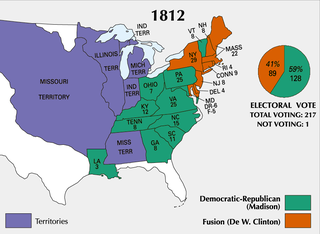| |||||
| Decades: | |||||
|---|---|---|---|---|---|
| See also: | |||||
Events from the year 1850 in the United States.
| |||||
| Decades: | |||||
|---|---|---|---|---|---|
| See also: | |||||
Events from the year 1850 in the United States.



1850 (MDCCCL) was a common year starting on Tuesday of the Gregorian calendar and a common year starting on Sunday of the Julian calendar, the 1850th year of the Common Era (CE) and Anno Domini (AD) designations, the 850th year of the 2nd millennium, the 50th year of the 19th century, and the 1st year of the 1850s decade. As of the start of 1850, the Gregorian calendar was 12 days ahead of the Julian calendar, which remained in localized use until 1923.

The 1852 United States presidential election was the 17th quadrennial presidential election, held on Tuesday, November 2, 1852. Democrat Franklin Pierce defeated Whig nominee General Winfield Scott. A third party candidate from the Free Soil party, John P. Hale, also ran and came in third place, but got no electoral votes.

The Compromise of 1850 was a package of five separate bills passed by the United States Congress in September 1850 that temporarily defused tensions between slave and free states in the years leading up to the American Civil War. Designed by Whig senator Henry Clay and Democratic senator Stephen A. Douglas, with the support of President Millard Fillmore, the compromise centered on how to handle slavery in recently acquired territories from the Mexican–American War (1846–48).

The 31st United States Congress was a meeting of the legislative branch of the United States federal government, consisting of the United States Senate and the United States House of Representatives. It met in Washington, D.C., from March 4, 1849, to March 4, 1851, during the 16 months of the Zachary Taylor presidency and the first eight months of the administration of Millard Fillmore's. The apportionment of seats in this House of Representatives was based on the 1840 United States census. The Senate had a Democratic majority, while there was a Democratic plurality in the House.

The presidency of Millard Fillmore began on July 9, 1850, when Millard Fillmore became President of the United States upon the death of Zachary Taylor, and ended on March 4, 1853. Fillmore had been Vice President of the United States for 1 year, 4 months when he became the 13th United States president. Fillmore was the second president to succeed to the office without being elected to it, after John Tyler. He was the last Whig president. His presidency ended after losing the Whig nomination at the 1852 Whig National Convention. Fillmore was succeeded by Democrat Franklin Pierce.

Millard Fillmore was the 13th president of the United States, serving from 1850 to 1853, the last president to have been a member of the Whig Party while in office. A former member of the U.S. House of Representatives, Fillmore was elected vice president in 1848, and succeeded to the presidency when Zachary Taylor died in July 1850. Fillmore was instrumental in passing the Compromise of 1850, which led to a brief truce in the battle over the expansion of slavery.
Events from the year 1862 in the United States.
Events from the year 1800 in the United States.

The following is a partial list of events from the year 1812 in the United States. After years of increasing tensions, the United States declares war on the British Empire, starting the War of 1812.
Events from the year 1843 in the United States.
Events from the year 1849 in the United States.
Events from the year 1851 in the United States.
Events from the year 1852 in the United States.
Events from the year 1853 in the United States.
1856 in the United States included some significant events that pushed the nation closer towards civil war.
Events from the year 1860 in the United States.
Events from the year 1874 in the United States.

The California Statehood Act, officially An Act for the Admission of the State of California into the Union and also known as the California Admission Act, is the federal legislation that admitted California to the United States as the thirty-first state. Passed in 1850 by the 31st United States Congress, the law made California one of only a few states to become a state without first being an organized territory.